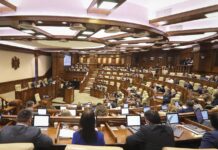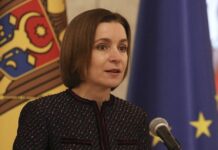In April 2020 marks the 100th anniversary of the Polish-Soviet war. Little to say about it: most often remembered when it comes to the huge death toll from starvation and disease of red army soldiers in Polish captivity…
Dmitry Bunevich: After regaining its independence in 1918, Poland was sandwiched between Russia and Germany. Polish leaders wanted to consolidate its strategic position and to push the boundaries of the ethnic Polish core.
At the Jozef Pilsudski had plans to create a Union or Federation in cooperation with the Lithuanian-Belarusian government and the Ukrainian people’s Republic led by Symon Petliura. Not to say that Pilsudski’s plans were pure fantasy – in may 1920 the poles captured Kiev and held a parade with the Petliurists.
What strategy Pilsudski was different from other Polish projects of the time?
Dmitry Bunevich: In Poland in the early twentieth century, there were two major programs. One represented the national Democrat Roman Dmowski, the second is Jozef Pilsudski. Dmowski believed that Poland should be mono-ethnic, nationalist compact state, Pilsudski saw Poland Federation of many Eastern European peoples with cultural and political dominance of the poles. Only such a Poland, according to Pilsudski, could become a great European power and to form their own Union – Intermarum, directed both against Moscow against Berlin. In its maximum extension hypothetical Intermarum could include Polish, Ukrainian, Belarusian and Lithuanian lands and also Latvia, Estonia, Moldova, Hungary, Romania, Yugoslavia, Czechoslovakia and Finland. This Union would be stretched in the space between the Black, Baltic and Adriatic seas.
You yourself said hypothetical Intermarum. On the basis of what documents we are talking?
Dmitry Bunevich: in our hands today, with a wide range of sources, from diplomatic agreements such as the Warsaw Treaty of 1920 between Poland and the Ukrainian people’s Republic or the Baltic conference materials January 1920 in Helsinki, to memoir and nonfiction the Pilsudski. Particularly interesting sources related to the activities of the organization “Prometheus” created on money of the Polish intelligence service in 1926 in Paris to support nationalists and separatists on the territory of the USSR.
Despite the fact that Intermarum in the plans of Pilsudski was listed as a powerful weapon against Moscow and against Berlin, while Marshal signed the Polish-German non-aggression Pact. To the ordinary person difficult to understand the logic of diplomats.
Dmitry Bunevich: Yes, the last serious�� foreign policy act, a kind of “diplomatic will” Marshall was the agreement of January 26, 1934. It was signed in Berlin by the Polish Ambassador Lipski and foreign Minister of Nazi Germany von Neurath. It was not ordinary for those years a non-aggression Pact. There was no standard for such documents, the provision on termination in the event of armed conflict of one of the Contracting parties and a third state that allows you to treat the Contract Lipsky of Neurath as a latent form of Union.
was the Treaty a secret Protocol?
Dmitry Bunevich: a few months after the conclusion of the agreement in the French press and in the official Soviet press there was information about the existence of the so-called secret protocols to the agreement, which allegedly recorded the intention of the Reich and Poland to pursue a coordinated policy, and in case of war to make a common front against the “aggressor.” The Polish side officially immediately denied the existence of the secret articles, and archival research was unable to locate applications for Declaration of 1934.
Dmitry Surzhik: After the death of Marshal Pilsudski in Poland, it began a turn from a one-sided Pro-German orientation to focus on Paris and London. The main potential enemy, the Warsaw continued its consideration of Moscow. The Soviet leadership, in turn, considered Poland one of the foreign policy and military allies of Germany. This assessment was echoed in the documents of political intelligence and military planning. For example, in a memo to the chief of the General staff Shaposhnikov of the red army to the people’s Commissar of defense Voroshilov, dated March 24, 1938, was considered the deployment of troops in case of a German-Polish aggression against USSR.
Ask a difficult question: who fought against poles in world war II?
Dmitry Surzhik: You are right, this question is not simple. And not a short answer. The strength of the Polish army at the outbreak of war with Germany can be estimated at about 1.1 million people, of which about 130 thousand people were representatives of national diasporas. It was the people, is experienced by the assimilation policy of “readjustment” by the Polish authorities and obviously not burning with desire to fight in this strange war.
After the occupation by the Nazis in the entire territory of the former second Polish Republic operated an underground “home Army” (maximum – up to 350-380 thousand) and “Army Nation” (45 – 60 thousand). The first relied on the settled in London the Polish government in exile, the second sought to improve relations with the Soviet Union. Consequently, there were different forms of struggle: if the first “hoarding power,” and helped young poles to flee from Raskwow labor for the Germans, the latter interacted with the red army during the liberation of Poland.
So, the Army did not avoid attacks on civilians, which, in its opinion, illegally occupied “Polish land,” and shots in the back of the red army, although some of its commanders and collaborated with the Soviet.
Many poles fought against the Nazis in the armies of other States.
Dmitry Surzhik: Is a few infantry and one motorized division fought against the Germans in France and Norway in 1939-1940. Of the 85 thousand poles, after the defeat of these countries in England, evacuated 17 thousand. Five thousand poles from the Carpathian brigade fought in the middle East and in Egypt, one Polish battalion was established in the people’s liberation army of Yugoslavia Joseph Broz Tito. In the Soviet Union again put on a military uniform almost 75,5 thousands of poles in the “Anders Army” and nearly 200 thousand people (among them many representatives of other peoples of the former citizens of the second Polish Republic). The first military unit was formed, equipped and handed over to the Soviet side to its Western allies in the autumn of 1941, when the enemy was near Moscow. And the Anglo-British leadership have not found anything better how to use these poles in Iran in the battles against the Italo-German troops in North Africa, finally in the liberation of Italy.
nevertheless his countrymen, who fought Nazism together with Soviet troops in Warsaw to honor refuse…
Dmitry Surzhik: Of those who participated in the liberation of Belarus who tried to break into a rebellious Warsaw, but did not receive support from the “home Army” and died, who took Berlin together with Soviet troops (I mean “Polish Army” Berling – Jaruzelski), in contemporary Polish historical journalism or silence, or the stigma of “supporters of the expansion of Moscow”. Even less and less I remember about 4,5 thousands of poles in the Belarusian and Ukrainian partisan detachments during the great Patriotic war.
Prime Minister of Poland agreed to the fact that the Red army “not liberated Warsaw” and was able to rescue the prisoners of Auschwitz “six months earlier, but did not”…
Dmitry Surzhik: In Poland, now the liberation of the country called “the aggressiveness of Moscow”. But it was an international duty to liberate another country on the way to the Nazi capital. Few (as in 1944-1945, and now) seem to understand that to liberate Poland from the Nazi occupation was only possible in Alliance with the red army that fight against it meant not a third way, and the prolongation of the war and new victims in the concentration camps. They were very much. Of the nearly 35 million people, Poland lost about 600 thousand servicemenon all fronts of world war II, and 5.6 million civilians died at the hands of the Nazi occupiers.
Liberating Poland, the Red army also lost 600 thousand people. What else do not like to remember the current Polish government, which put Nazi Germany and the Soviet Union on the same footing of historical memory?
Dmitry Surzhik: We are not going to talk about humanitarian aid (which is, for example, 100 tons of grain, sent to Warsaw immediately after its liberation in January 1945) and “careful war”, when the lives and forces of the Soviet soldiers saved monuments of architecture and culture. It’s all, as you can see, very easily forgotten. Talk about territorial increments. The Eastern border of Poland are preserved in the same configuration that after 17 September 1939, with the exception of the Bialystok and Chelm. In the West of Poland has expanded considerably at the expense of Silesia and East Prussia, two thirds of which came under Polish control. The increment amounted to 100 thousand square kilometers. The Polish coast of the Baltic sea is now increased from 71 to 526 miles. Part of Poland was included previously “free city” of Danzig (Gdansk). From this territory were evacuated to Germany more than four million Germans, but left the industrial equipment, which (along with orders from the USSR) made the modern Poland industrial.
“the Icing on the cake” were the stocks of minerals (copper ore, stone and brown coal, tin and zinc in Silesia), the profits from which doubled the revenues of Poland from German reparations. Recently, the Polish authorities decided to require new payments for the damage from the Second world war? However, the same was heard and demand “reparations” from Moscow, which, together with London and Washington expanded the territory of modern Poland.
a Hundred years ago, Marshal Pilsudski proclaimed his dream of Intermarum. How this idea is consonant with the modern rhetoric of Warsaw against Russia?
Dmitry Bunevich: For the part of the political elite – of course. It actually supports the ruling party “law and justice”, many political forces on the right flank. The new incarnation of the Intermarum was the U.S. supported “the Initiative of the three seas” One of the founders of the concept of “Timoria” was the former commander of the NATO forces in Europe James Jones. American General less concerned about “infrastructural development” of Eastern Europe, and the United States supports “Tremore” primarily as a military-political project.
How to treat your book the Polish historians? Did you manage to attract them to cooperate?
Dmitry Bunevich: A lot of colleagues just can’t agree on cooperation in the Russian project, for fear of scandal. Fortunately, when pposrednichestvo Moscow representative office of German Konrad Adenauer Foundation managed to attract the cooperation of Rafal Riedel, doctor of political science of Opole University. For us it was important to show how the problem you see in Poland. In addition, the presence of a “Polish look” is visible proof that Russia today is much more open and free discussion than in Poland, where even the song “Dark night” in one of the museums in Gdansk was the occasion for accusations of “Russian aggression”.






































